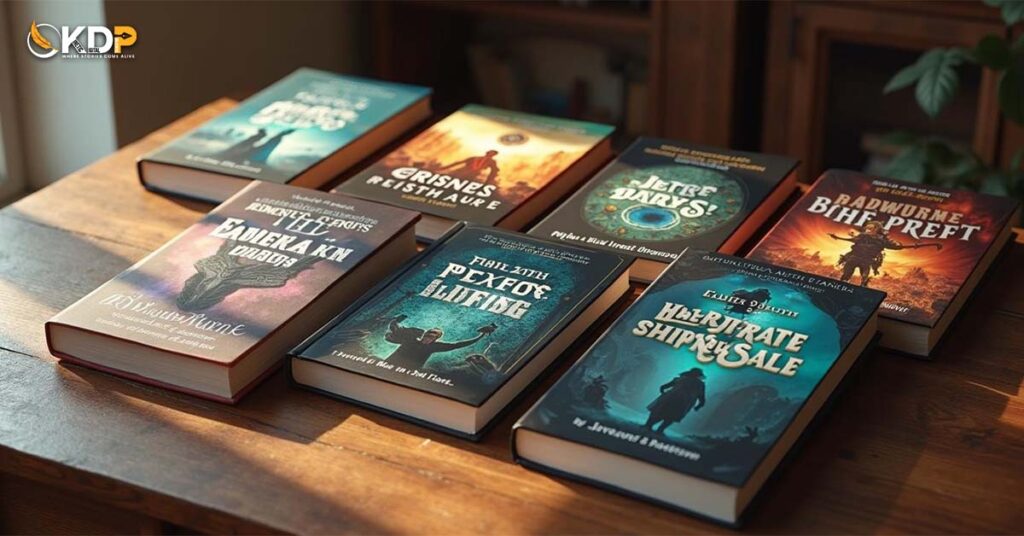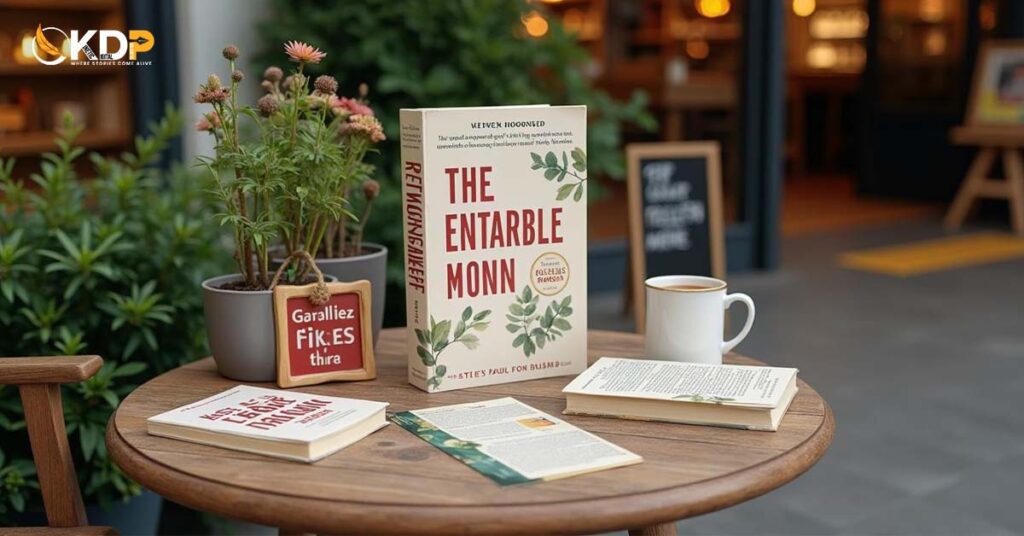How to Write Your Own Personal Memoir
Have you ever caught yourself drifting into dreams of capturing your life’s tale? Crafting a memoir that mirrors your essence is a worthy pursuit. That creative spark whispers you have a story to share. Writing your memoir is a journey of discovery, rewarding yet daunting. Trust me, every writer has felt that initial wave of overwhelm. But don’t let it deter you; your narrative is waiting to unfold.
Realistically, life is a tapestry woven with countless stories, lessons, and pivotal moments. Crafting a memoir, however, is more than recounting events; it’s a deep dive into your emotions.
Crafting your story demands a careful curation of experiences that define you. Examine each moment with honesty, allowing its true essence to shine. Your mission is to weave these narratives into a tapestry that resonates, beckoning readers to embark on your journey.
This journey is your chance to dig deeper into your past. Understand your experiences intimately and share them in a way that’s both powerful and genuine. Whether you’re armed with a pen and a notebook or racing towards your keyboard, let your authentic voice take center stage.
So let’s get started right away!
So, What Exactly Is a Memoir
A memoir is widely considered to be a creative form of non-fiction that primarily focuses on a piece of your life, told with your voice and only your truth. You’re not just recording your life from birth to the present; it’s more than just a list of things that happened. Rather, a memoir focuses on significant events, pivotal moments, introspection, and vivid recollections. It seeks to investigate how you developed, what you learned, and what those experiences meant to you.
Writing a memoir allows you to express your viewpoint. Memories can fade over time. Facts might get blurry, and feelings can shift. But more than perfect accuracy, what matters is sincerity, voice, and honesty. Readers want to relate to you, feel moved, or feel seen. The best memoirs are vulnerable and don’t try to be flawless.
Memoir vs. Autobiography: Which One Are You Writing?
Though often tossed around like confetti, memoir and autobiography are distinct genres. Understanding their differences is key to mastering your craft. This clarity empowers you to write a memoir, not just an autobiography, and, most importantly, helps you kickstart your journey.
If you’ve found yourself pondering, “How do I begin a memoir?” or “What’s the secret to writing great memoirs?”—you’re in the right place. Grasping this distinction provides a solid foundation, but keep a central theme in mind. It’s your compass, guiding you through the memoir-writing maze with ease.
Let’s go ahead and explore the three basic differences between the two:
Philosophy
The French word mémoire, which means “memory,” is where the word memoir originates. That root reveals the essence of the genre and goes beyond simple linguistic trivia. A memoir shouldn’t be a detailed journal of your life. Rather, it is a narrative that has been shaped, interpreted, and given meaning by your memories.
A memoir is like a zoom lens, it focuses on specific moments, while an autobiography is a wide-angle lens. It shows every moment and important event. It sharpens the focus of a single chapter, theme, or pivotal moment. Join me as I share key events that shaped who I am, not every step I’ve taken.
Scope
Typically, an autobiography weaves a vibrant tapestry of an author’s life story. It presents a sweeping panorama of significant moments, celebrating the entirety of their journey. In contrast, a personal memoir hones in on a particular facet of this landscape, a pivotal event, a central theme, or an unforgettable chapter that resonates deeply.
This allure beckons those venturing into memoir writing, especially when uncertainty clouds the path. It grants you the creative license to emphasize meaning over mere chronology. Memoirs artfully weave memory, reflection, and interpretation, creating space for voice, emotion, and rich storytelling.
Structure
Memoirs are windows into the soul, deeply personal and often delightfully nonlinear. When crafting your memoir, a robust structure is the anchor that stabilizes your tale. Some writers trace a chronological path, presenting events in tidy order. This approach, while straightforward, can feel flat unless sprinkled with insightful reflection. Others weave themes
Weaving themes like resilience, grief, and identity into your chapters creates harmony. Each segment echoes a larger narrative, singing in unison with your story.
Ready to dive into your memoir adventure? Choose a structure that mirrors your unique recollections. A whimsical waltz through time reveals truths hidden by strict timelines. Let memories swirl and twirl on the page, guiding your narrative. Embrace the ebb and flow of your story’s rhythm! This delightful flexibility elevates memoir writing into an art form; you’re not just recounting events, but sculpting experiences into a vivid tapestry that captivates hearts and stirs souls.
A Practical Guide to Writing a Memoir
Below is a detailed plan for how to write a memoir, from first idea to revision. These steps will guide you in structuring and drafting your personal memoir in a sustainable way.
Pick a Theme
Many memoir writers stumble upon the same pitfall: they embark on a journey without a map. They sit down, eager to “tell their story,” yet lose sight of its essence. When focus fades, narratives spin like a dizzying carousel. They try to cover vast landscapes, but instead, they tumble into chaos. Often, this leads to a book that languishes on the shelf, unfinished and unfulfilled. Determining your theme before you write a single page is the best way to begin writing a memoir. Make sure to ask yourselves these important questions:
- What emotions do I want my readers to feel?
- What’s the message at the heart of my story?
- What lessons from my own life could actually help someone else?
Gather Your Defining Moments
Writing a memoir is nothing close to journaling. It’s never been about jotting down daily entries but about shaping stories. When writing a memoir, start by pinpointing all those events that define your theme, even by a little. Don’t zoom in only on the big milestones as you craft your memoir. Instead, savor every shade of life. This collection of vivid anecdotes is your treasure trove, your raw material. Dive deep into these stories as you figure out how to write that compelling memoir. Each experience is a stepping stone on your path to storytelling mastery. These building blocks make writing easier and keep you from later staring at a blank page.
Map Out Your Memoir’s Entryway
It’s time to craft an attention-grabbing opening after you’ve gathered your anecdotes. In addition, crafting your story starts with captivating the audience from the get-go. The opening pages are your stage, showcasing why your tale matters. Think of this as your golden opportunity to seize readers’ attention. If you’re unsure how to kick off your memoir, embrace this moment.
- Put Readers in the Action: To give the scene and atmosphere a sense of realism, use sensory details.
- Spark Instant Curiosity: Hook readers with an opening that dances on the edge of intrigue.
- Infuse Real Emotion: Instead of just telling, let your feelings flood the page.
- Kick Off with a Defining Moment: Launch your story with a seismic shift, a touch of poignant detail, or a dash of humor.
- Forge an Instant Connection: Pen your words as if sharing secrets with a cherished friend, not merely addressing a crowd.
Sketch the Structure of Your Memoir
Think of a memoir outline as a vibrant roadmap, not a stiff academic guide. Arrange your stories thoughtfully, aligning them with your theme. Highlight moments of revelation, those “this meant everything then, but now?” reflections that enrich your tale. Reflect on key changes in your life. Think about how childhood led to the chaos of adolescence. Also, consider the shifts before and after important events. Keep an eye on how you frame your narrative.
Craft scenes from the past that illuminate your present journey. To help you maintain a tight pace, write down the approximate word or page counts for each section. For example, your opening section might be 2,000 words, while the middle section might be 3,000.
Start Drafting Your Memoir
Now’s the moment to open the pages of your life story. With your material in hand, it’s showtime! Your outline is your map, guiding you through the emotional terrain. The opening may be short, yet the middle can feel like quicksand to many writers. Don’t let that overwhelm sink your creativity! As you ponder how to weave your memoir together, remember: trust your groundwork. Keep charging ahead, even if your first draft resembles a chaotic masterpiece.
Use a Storyteller’s Lens
Although a memoir is not a novel, you can improve your writing by using the techniques of a novelist. Your personal memoir should strive for the same level of immersion that makes novels captivating. Instead of just recounting events, paint vivid scenes. Give readers a glimpse of the emotions, textures, and settings that influenced each scene.
Give Faces to Your People
The characters in your story may be real, but your readers are not yet familiar with them. Describe gestures, voices, peculiarities, and speech patterns in addition to names and roles. Instead of using exposition, use dialogue and action to demonstrate your relationships. This transforms your memoir from a dry recitation into a lived experience.
Add Depth With Others’ Voices
While your memoir shines a spotlight on your journey, don’t overlook the voices of others. Their insights can weave a richer tapestry into your narrative. By quoting a conversation, highlighting another’s memory, or presenting a differing opinion, you add layers to your theme. This infusion of perspective elevates your story, transforming it from ordinary to extraordinary.
Refine and Polish Your Memoir
When you’re done drafting your personal memoir, the next step is to read and edit it so it’s as clean, compelling, and authentic as possible. Here’s how to approach this stage of writing memoirs.
Take a Breather From Your Draft
Avoid the temptation to jump right into edits after writing the last line. To give yourself a break, put your manuscript on hold for a few weeks. You can return from this break with a new perspective, improved judgment, and a better understanding of what is and is not working.
Judge Your Story as If It’s Not Yours
Read your memoir from beginning to end as if you had never seen it before when you pick it up again. Check if the stories flow well. Are the anecdotes engaging? Does the reader get a clear message or takeaway? Look for any parts that feel slow, unclear, or off-topic. Before continuing, this will assist you in identifying areas that need to be tightened or expanded.
Keep Your Signature Style Intact
Editing is all about ensuring that your genuine voice stays constant throughout. Put your ideas, emotions, and viewpoints on paper in a way that is authentic to you. Readers want your story told the way you want it to be told, not just any story.
Frequently Asked Questions
Do I need a perfect memory or record?
No. Memories are imperfect. What matters more is emotional truth than photographic accuracy. But when possible, cross-check dates or facts to avoid confusion. If some memories are hazy, you can note that in the text; some of what makes memoirs powerful is the admission of uncertainty.
Should I write the beginning first, or can I start in the middle?
Many memoir writers begin in the middle of action (in medias res), then flash back. This can be a strong way to start a memoir because it grabs attention. Other writers prefer a chronological beginning. There is no single “correct” method. What matters is which beginning feels right for your story and your voice.
How much reflection is too much?
Reflection is essential: it’s what transforms anecdote into memoir. But if you reflect too frequently or too heavily, you risk interrupting narrative momentum. Try to balance. After a scene, let moments breathe; reflect in ways that add insight, not summary. Don’t over-moralize. Let readers infer sometimes.
Can I write a memoir if I’m not a natural writer?
Absolutely. Memoir isn’t about perfect prose at first; it’s about telling your story, discovering your voice. You can learn style as you go, through writing, reading memoir examples, workshops, and revision. The more personal memoirs you read, the more you’ll learn what works and what doesn’t.
How long should my memoir be?
There’s no fixed length. Some memoirs are 40,000 words; others are 80,000 or more. It depends on how much scope you choose. The important thing is that each chapter, each scene moves the story forward, reflects your theme, and holds the reader’s interest.
Do I need to worry about legal/ethical issues?
Yes. If people in your memoir are identifiable, especially in negative or private situations, be mindful of privacy and potential defamation. Changing names, combining characters, or obtaining permissions can help. Also, respect your own emotional safety: writing a memoir can open old wounds, so take care of yourself.
Publishing Pathways for Your Personal Memoir
It’s finally time to share your personal memoir with the world. Publishing is the way your story gets to readers. You can go with a traditional publisher or choose to self-publish.
Traditional Publishing
A major publisher is the dream of many aspiring memoirists. This route is notoriously fierce, where prestige battles with persistence for victory. Out of thousands of manuscripts, only a scant handful find a home with traditional publishers. Rejections flood in like heavy rain, especially for new authors without a loyal following.
Self-Publishing Support
For most authors, self-publishing is a fast track to reader engagement. Modern tools empower writers to craft books that rival traditional releases in professionalism. Thanks to accessible services for editing, cover art, formatting, printing, and marketing, every author’s dream can now become a reality.
Final Say!
Memoir writing is more than simply putting words on paper; it’s a journey of self-discovery, storytelling, and connection. Writing a memoir invites you to reflect on your past, make sense of your experiences, and transform them into a narrative that resonates with others. It’s both an art and a craft. To craft a memoir that stands out, begin by setting your philosophy and defining the scope of your story. Ask yourself what themes guide your journey and what message you want your readers to walk away with.
Choosing the right structure is another key step. A well-organized memoir allows readers to travel through your experiences seamlessly. Consider whether your story flows best chronologically, thematically, or as a series of pivotal moments. Understanding your audience is equally important; knowing who you’re writing for will shape your tone, style, and the details you emphasize.






















